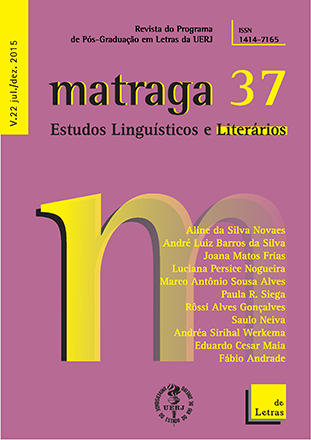FERROS-VELHOS E UTENSÍLIOS: CONCEITOS GRAMSCIANOS NOS ESTUDOS LITERÁRIOS E CULTURAIS
Palavras-chave:
literatura, cultura, Gramsci, subalternidade, hegemoniaResumo
Observando a importância que o conceito de subalternidade tem alcançado nos estudos literários brasileiros, indicamos a origem gramsciana do termo e sua conexão com os estudos culturais britânicos e pós-coloniais indianos, bem como sua reflexão no pensamento latino-americano. Ao considerar a posição geopolítica de Antonio Gramsci, recuperamos os conceitos de hegemonia, organização cultural, intelectual orgânico e subordinação intelectual, indicando a pertinência desse instrumental teórico para os estudos literários brasileiros. Nessa ótica, apontamos para a validade da ideia de “atualização histórica” de Darcy Ribeiro, ligando-a à constatação de Roberto Schwarz sobre a contínua interrupção de nosso pensamento crítico em prol das ondas teóricas que chegam dos centros globais. Para demonstrar a aplicabilidade da teoria gramsciana, identificamos em O mulato, de Aluísio Azevedo, um exemplo de subordinação cultural da periferia ao centro, indicando a defasagem entre o ideal progressista que dá base ao romance e a realidade à qual tal ideal serve de filtro interpretativo.
Downloads
Downloads
Publicado
Como Citar
Edição
Seção
Licença
AUTORIZAÇÃO
A Matraga – Revista do Programa de Pós-Graduação em Letras da UERJ está autorizada a publicar o artigo ora submetido, caso seja aceito para publicação online. Fica atestado que a contribuição é original, que não está sendo submetida a outro editor para publicação, e que a presente declaração é a expressão da verdade.
Os trabalhos publicados no espaço virtual da Matraga – Revista do Programa de Pós-Graduação em Letras da UERJ serão automaticamente cedidos, ficando os seus direitos autorais reservados à Matraga. Sua reprodução, total ou parcial, é condicionada à citação dos autores e dos dados da publicação.

A Matraga utiliza uma Licença Creative Commons - Atribuição-NãoComercial 4.0 Internacional.





